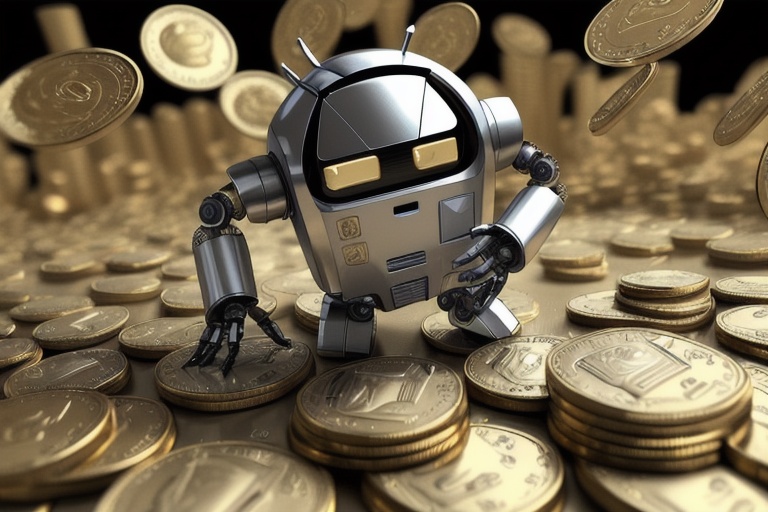The modern era is marked by a profound integration of programming with artificial intelligence (AI) and machine learning (ML), a fusion unlocking limitless potential in innovation and industry transformation. This synergy is altering the very fabric of how we engage with technology, offering new avenues for advanced algorithm creation, intelligent system development, and data-centric insight leverage. As we explore this fascinating convergence, it is imperative that we both appreciate its impact and address the ethical questions it raises.
The modern era is marked by a profound integration of programming with artificial intelligence (AI) and machine learning (ML), a fusion unlocking limitless potential in innovation and industry transformation. This synergy is altering the very fabric of how we engage with technology, offering new avenues for advanced algorithm creation, intelligent system development, and data-centric insight leverage. As we explore this fascinating convergence, it is imperative that we both appreciate its impact and address the ethical questions it raises.
The Expanding Role of Programming
At the foundation of technological progression lies programming, an essential tool that has broadened its horizons beyond mere software development to become the bedrock of AI and ML. The contemporary programmer is no longer just a creator of code but a craftsman of intelligent systems. These professionals devise algorithms that not only digest and respond to data but are also capable of evolving from their interactions with it. Their prowess in constructing predictive models and decision-making engines sustain the forward momentum of AI and ML.
Understanding Artificial Intelligence
Dubbed machine intelligence, AI embodies the replication of human cognitive functions by computers or machines. It is a wide-ranging field with capabilities extending to natural language processing, computer vision, and independent decision-making. This technology empowers machines to sense, contemplate, assimilate, and solve problems, thus equipping them to handle tasks once believed to be solely within the human domain.
The Significance of Machine Learning
A critical subset of AI, machine learning concentrates on formulating algorithms that learn from data to make predictions or judgments. ML algorithms plow through extensive datasets to unearth patterns and fashion insights vital for process optimization, efficacy enhancement, and informed decision-making. Fortified by the rise of big data and computational power leaps, ML has solidified its position as a transformational tool permeating various sectors.
Industry Breakthroughs and Innovations
Programming fused with AI and ML is spurring paradigm shifts across various industries. In healthcare, AI and ML amalgamate to scrutinize patient records, providing diagnoses, suggesting treatment protocols, and predicting medical trends. The financial sector leverages algorithms to process real-time market data, discerning patterns and autonomously carrying out trades. The realm of transportation sees self-driving vehicles employing AI and ML to interpret their context, maneuver through multifaceted settings, and make instantaneous decisions.
The Everyday Impact of AI and ML
Beyond an industrial scope, these technologies are revolutionizing our interaction with gadgets and systems ubiquitously encountered in daily life. AI and ML are the muscles driving virtual assistants like Siri and Alexa, enabling them to process human speech, respond to queries, and execute tasks. Similarly, these technologies underpin recommendation engines that tailor our digital encounters – from online shopping suggestions to customized entertainment content on streaming platforms.
Ethical Considerations and Challenges
With the potential that programming, AI, and ML harbor, they nevertheless invite a myriad of concerns, including privacy, bias, cybersecurity, and the repercussion on employment. As our dependence on intelligent systems escalates, shaping principled guidelines and regulations is paramount to uphold transparency, justice, and responsibility in AI and ML pursuits.
Keeping Pace with Technological Evolution
In an environment that is in constant flux, it is essential to remain abreast of the latest developments and applications in programming, AI, and ML. These disciplines are pivotal in enhancing productivity, sparking innovation, and tackling intricate challenges. A thorough grasp of the nexus between programming, AI, and ML permits us to wield these tools for widespread benefit, paving the way for a brighter collective future.
The intersection of programming, AI, and ML is sculpting a dynamic landscape where every industrial domain and aspect of our lives are being reimagined. By addressing the ethical quandaries and challenges attendant to AI and ML adoption, and nurturing knowledge and responsible innovation, these potent forces can be directed for the greater good, unlocking unprecedented opportunities and catalyzing progressive transformations.
Information for this article was gathered from the following source.


